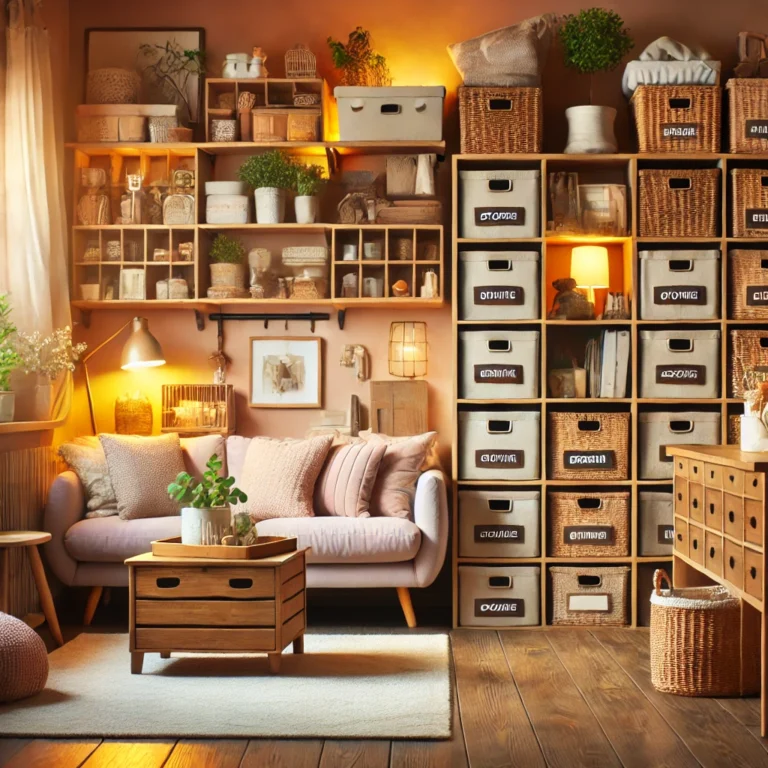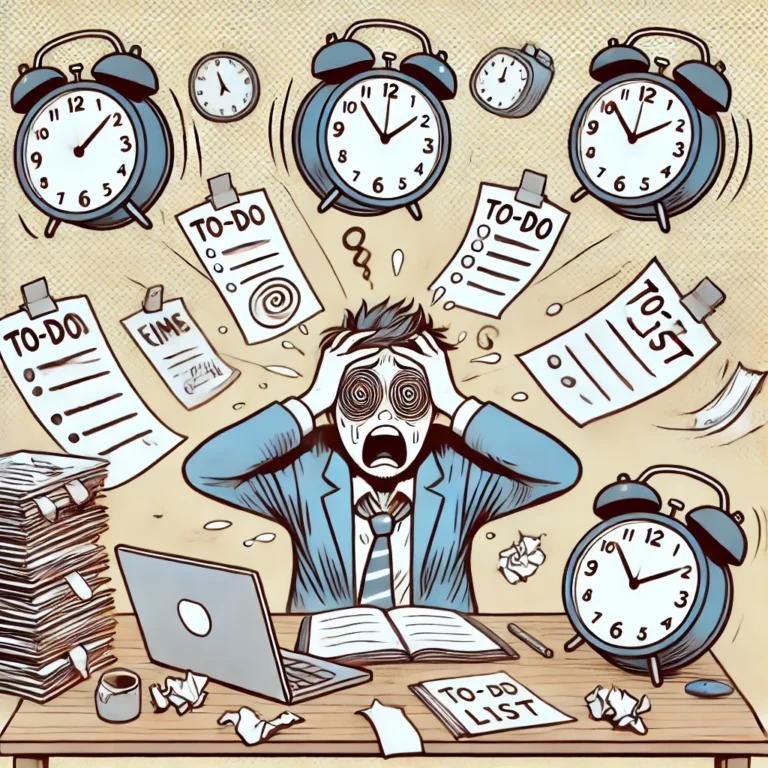The Ultimate Beginner’s Guide to Decluttering Your Home: A Room-by-Room Checklist for Intentional Living

Introduction to Decluttering and Minimalism
In today’s fast-paced world, the importance of living with intention cannot be overstated. The accumulation of possessions often leads to overstimulation and chaos within our living spaces, which can contribute to increased stress and decreased productivity. Decluttering serves as an effective remedy to this issue, providing individuals with a pathway towards a more organized and tranquil home environment. By choosing to remove unnecessary items, we can create a space that fosters clarity and enhances overall well-being.
The act of decluttering involves systematically evaluating our belongings and deciding which items to keep, donate, or discard. This process not only reduces physical clutter but also helps to clear mental space, allowing us to focus on what truly matters. Many individuals find that once they start the decluttering journey, they experience a heightened sense of control and empowerment over their lives. As our homes reflect our internal state, a decluttered environment is often linked to improved mental clarity and emotional health.
Minimalism, closely intertwined with the concept of decluttering, champions the idea of simplicity and intentionality. It encourages individuals to embrace only those possessions that add value to their lives and eliminate the distractions that come from an excess of material goods. By adopting a minimalist mindset, one can create a lifestyle that prioritizes experiences and meaningful relationships over the pursuit of more “stuff.” The synergy between decluttering and minimalism sets the stage for a more intentional way of living, encouraging individuals to focus on the present moment and cultivate a deeper appreciation for their surroundings.
Preparing Yourself for the Decluttering Journey
Embarking on a decluttering journey requires more than just physical effort; it necessitates a mental and emotional readiness to confront one’s possessions. The first step in preparing for this transformative process is to cultivate a mindset geared toward honesty and self-reflection. Acknowledge the items you own and evaluate their significance in your life. This evaluation might reveal belongings that are not only unnecessary but also burdening to your mental space.
To effectively navigate emotional attachments to certain items, it is beneficial to approach each belonging with a sense of curiosity rather than guilt. Understand why you hold onto specific items—be it nostalgia, guilt, or the fear of letting go. Addressing these feelings will facilitate a more streamlined decluttering process, enabling you to distinguish between what genuinely contributes to your sense of home and what needs to be released. Consider utilizing the “one-year rule,” which suggests parting with items that have not been used in the past year, thereby prompting a pragmatic approach to decision-making.
Setting specific goals can significantly enhance your motivation throughout your decluttering journey. Break the process into manageable tasks by establishing clear objectives, such as decluttering one room per week or setting aside thirty minutes each day to work on a specific area. Create a realistic timeline that accommodates your schedule and resolves to stick with it. This structured plan will not only keep the momentum consistent but also allow for periodic reassessment of your progress.
Additionally, consider enlisting the support of friends or family members. Having a second opinion can provide valuable insight and encouragement. By fostering a supportive environment, the emotional strains of decluttering can be mitigated, and the overall experience can become more enjoyable. As you prepare for your decluttering journey, remember that this process represents a commitment to intentional living, ultimately leading to a more organized and fulfilling home.
Room-by-Room Decluttering Checklist Overview
The process of decluttering can greatly enhance the ambiance and functionality of a living space. To maximize efficiency during this venture, it is useful to adopt a structured approach by employing a room-by-room decluttering checklist. This comprehensive guide will cover essential areas of your home, including the living room, kitchen, bedroom, bathroom, and home office, among others. Each room presents unique challenges and opportunities for decluttering, and understanding this layout can facilitate a more organized environment.
Starting with the living room, this space often serves as both a social and relaxation area. It is important to determine which items contribute positively to your living experience and which may need to be removed. Decluttering in this area can create a more welcoming atmosphere and improve the overall functionality of the space.
Next, the kitchen is a prime candidate for decluttering, as it is a central hub for food preparation and social interaction. A well-organized kitchen not only enhances efficiency but also encourages healthy cooking habits. The checklist will guide readers on how to evaluate kitchen items, including utensils, cookware, and pantry supplies, fostering a more streamlined culinary space.
The bedroom, an oasis for relaxation and rejuvenation, requires thoughtful assessment to ensure it remains a tranquil retreat. Decluttering this personal space involves evaluating clothing, accessories, and decorative items to create a serene environment that supports restful sleep and mindfulness.
In the bathroom, maintaining a clutter-free area can greatly improve daily routines. The checklist will assist in identifying products that may be expired or rarely used, ultimately promoting a cleaner and more efficient bathroom setup.
Finally, the home office serves as a workspace and creative outlet. Organization in this room is crucial for productivity. The checklist will encourage readers to consider their office supplies, electronics, and documents, fostering a conducive work environment.
By approaching decluttering with a structured room-by-room checklist, individuals can create intentional, organized spaces that enhance their overall quality of life.
Decluttering the Living Room
Decluttering the living room is an essential step toward creating a more organized and functional home environment. This space often serves as the heart of the household, and its clutter can influence overall well-being. To embark on this decluttering journey, start by allocating a specific time for the task, ensuring you won’t be rushed. Consider breaking the process into manageable segments, focusing on one area at a time.
Begin by removing all items from surfaces such as coffee tables, side tables, and shelves. As you take each item out, ask yourself critical questions: Does this serve a purpose? Do I truly love it? If the answer is no, consider discarding or donating it. Create distinct piles for items you want to keep, donate, sell, or throw away. This sorting method not only simplifies decisions but also makes the organization process smoother.
After sorting, take a moment to organize the items you plan to keep. Utilize storage solutions such as decorative baskets or boxes to reduce visual clutter. Books and magazines can be kept on shelves, but ensure they are organized neatly. For important documents or items that require a specific location, invest in a filing system that keeps them both accessible and out of the way.
A common pitfall during decluttering is holding on to items out of guilt or nostalgia. It is important to recognize that memories can be cherished without keeping physical belongings. Furthermore, avoid the trap of over-organizing; instead, aim for simplicity to maintain a restful space. Regularly assess the living room for accumulation of items to prevent a return to clutter. Implementing a routine maintenance schedule can keep the space tidy long after the initial decluttering.
By following these actionable steps, you can transform your living room into a more inviting space, reflecting your intentions of intentional living and functionality.
Decluttering the Kitchen
The kitchen, often considered the heart of the home, can quickly accumulate clutter, making it challenging to maintain an organized and functional space. To begin the decluttering process, it’s essential to approach it systematically. Start with the kitchenware, including pots, pans, utensils, and dishes. An effective strategy is the “one-year rule”: if you haven’t used an item in the past year, consider whether it is worth keeping. Sort items into categories: keep, donate, and dispose of. This first step will help create a clear vision of what you truly need in your kitchen.
Next, address your food items. Check expiry dates and locate foods that may have been forgotten in the back of the pantry. Organizing canned goods and dry foods not only maximizes space but also simplifies meal preparation. Create a systematic layout by grouping similar items together – for instance, store all baking supplies in one area, and snacks in another. Using clear containers can also enhance visibility and encourage you to use what you have, further reducing food waste.
When it comes to appliances, evaluate their usage; if any appliance requires more effort to retrieve than it does to use, it may be time to say goodbye. For those that remain, ensure they are easily accessible. Consider investing in cabinet organizers that can save space and promote an orderly appearance. In terms of meal prep, designate specific areas for chopping, cooking, and storing prepared meals. A labeled shelving system can also enhance organization and encourage tidiness. Regularly revisiting the kitchen to maintain organization will contribute to intentional living, making it a more enjoyable space to create meals for yourself and loved ones.
Decluttering the Bedroom
Creating a peaceful retreat in your bedroom is essential for promoting rest, relaxation, and overall well-being. When decluttering this personal space, the focus should be on removing unnecessary items, thereby creating a serene environment conducive to sleep. The first step in this process is to assess your clothing. Begin by going through your wardrobe and determining which clothing items you truly wear and love. A good rule of thumb is to evaluate each piece based on its use over the last year. If you haven’t worn it or if it no longer serves a purpose in your life, consider donating or discarding it. This not only clears space but also makes it easier to find your favorite outfits amidst a curated selection.
Next, pay attention to accessories, such as jewelry, bags, and shoes. These items can easily accumulate and clutter your bedside tables or closets. To tackle this, choose a specific storage method for each category of accessories—such as jewelry boxes, hooks for bags, or clear storage bins for shoes—ensuring that they are organized and easily accessible. This simple organization can help maintain cleanliness while allowing you to enjoy the items you cherish most.
Additionally, it is important to consider personal items that may contribute to visual clutter, such as books, papers, and decorative items. Limit the number of personal items displayed on surfaces to only those that hold sentimental value or enhance the beauty of your space. Use decorative boxes or baskets for items that you wish to keep but don’t need on display, thus creating a streamlined look. By integrating these decluttering techniques, your bedroom can transform into a tranquil sanctuary that supports your need for rest and rejuvenation.
Decluttering the Bathroom
The bathroom, often a compact area filled with essential daily items, poses unique challenges for decluttering. Given the variety of toiletries, skincare products, and towels typically found in this space, it is crucial to approach the decluttering process methodically to ensure that only the necessities remain. Start by emptying all cabinets and drawers, creating a space where you can see everything you own. This step allows for a comprehensive assessment of your items.
When sorting through your toiletries and skincare products, consider the expiration dates and whether you have used the items in the past year. Products that have not been used, are expired, or do not spark joy should be disposed of responsibly. For items you do use, keep only those that are essential or provide personal satisfaction. For instance, if you have multiple half-used bottles of shampoo, determine the best one for your needs and recycle the others. This practice can significantly reduce clutter while making your bathroom feel more orderly.
Regarding towels, evaluate how many you actually need. A simple rule of thumb is to keep two bath towels per person, along with a few hand towels and washcloths. The remaining towels can be donated or repurposed for other cleaning jobs around the house. Finding effective storage solutions is especially important in smaller bathrooms. Consider utilizing vertical space by installing shelves or cabinets, which can efficiently store items while keeping them easily accessible. Additionally, drawer organizers can help keep smaller items like bobby pins and cotton swabs neatly arranged.
By adopting these strategies, you can create a more organized bathroom environment. Not only will you find it easier to locate items, but you will also foster a space that promotes relaxation and mindfulness. Embracing intentional living through decluttering ultimately transforms this essential space into a sanctuary.
Decluttering the Home Office
The home office has become a central hub for productivity, especially in a world increasingly oriented towards remote work. To cultivate a focused and efficient workspace, it is crucial to systematically declutter this area, creating an environment that promotes concentration and creativity. Start by assessing the existing setup. Identify items that are essential, those that are seldom used, and anything that is no longer needed. The primary goal is to streamline the workspace, minimizing distractions and maximizing functionality.
Begin with paperwork management. Papers can quickly accumulate, leading to chaos. Implement a filing system that categorizes documents by type—such as bills, reports, and personal correspondence. Consider digitizing documents where possible to reduce physical clutter, using cloud storage services or dedicated applications. This approach not only helps in decluttering but also ensures that important files are easily accessible and secure.
Next, focus on office supplies. It is easy to acquire an abundance of pens, sticky pads, and other supplies. Review what you have and keep only what you truly use. Consider utilizing drawer organizers or boxes to store supplies neatly. A limited selection of essential tools readily available on your desk can enhance efficiency without overwhelming the workspace.
Tech gadgets, while beneficial, can also contribute to clutter. Assess devices and cords that may be unnecessary or obsolete. Use cable management solutions to keep cords tidy and organized. Creating designated areas for electronics and their accessories can help maintain clarity in your workspace. Furthermore, set up a dedicated workspace to separate work from home life, ensuring that you have a consistent environment conducive to productivity.
Lastly, establish systems for task management. Utilizing planners, task lists, or project management software can greatly enhance focus. By organizing your tasks and maintaining a clear view of priorities, you can significantly improve your productivity. Implementing these strategies to declutter your home office will not only lead to a more organized environment but also facilitate a more intentional approach to your daily work. Remember, a serene and structured workspace aligns closely with increased motivation and overall satisfaction in your professional life.
Maintenance Tips for a Decluttered Home
Achieving a decluttered home is a significant accomplishment, but maintaining that organized space requires consistent effort and mindful practices. To prevent clutter from accumulating again, it is essential to adopt ongoing decluttering habits that promote intentional living. One effective strategy is to establish a regular decluttering schedule. Dedicating time each week or month specifically for this task can help keep your home tidy. This could involve assessing various areas of your home, such as the living room, kitchen, or bedroom, and determining if any items can be removed or rearranged.
Furthermore, employing the “one in, one out” rule can be an effective tactic to control clutter. This principle suggests that for every new item brought into your home, an existing item should be donated, discarded, or recycled. This practice can help you maintain a minimalist lifestyle by minimizing accumulation and enabling you to thoughtfully consider the items you truly want to keep. When a new item catches your eye, take a moment to reflect on its necessity and long-term value to avoid impulsive purchases.
Additionally, creating designated spaces for items can significantly contribute to a clutter-free home environment. By establishing specific places for items in drawers, closets, or shelves, you can easily locate and store possessions, giving them a clear spot in your living space. Regularly reassessing these designated areas will ensure that they remain functional and organized. Finally, daily habits such as tidying up at the end of the day or decluttering as you move through your home can make maintenance easier, preventing small messes from becoming overwhelming. By incorporating these practices, you can sustain a harmonious and intentional living space.
Conclusion: Embracing a Life of Intention
As we reach the end of our journey through the process of decluttering, it becomes evident that the benefits of adopting a minimalist lifestyle extend far beyond the mere physical act of clearing out space. A decluttered home can lead to enhanced mental clarity, reduced stress, and increased productivity. By intentionally selecting the items we choose to keep and surrounding ourselves with possessions that truly resonate with our values, we create an environment that fosters creativity and tranquility.
Embracing a life of intention enables individuals to redefine their relationship with possessions. It invites reflection on what is truly essential, allowing for a deeper understanding of oneself and one’s priorities. The act of decluttering encourages mindfulness, prompting us to consider the implications of our consumption habits. As we navigate this path towards simplicity, we find ourselves better equipped to focus on what truly matters, whether that be nurturing relationships, pursuing passions, or achieving personal goals.
We encourage readers to celebrate their achievements, no matter how small, in their decluttering journey. Sharing these milestones within a supportive community can provide motivation and accountability, making the process much more rewarding. Connecting with others who share a similar commitment to intentional living can create an enriching exchange of ideas, strategies, and experiences, fostering a sense of camaraderie.
As you move forward, remember that the journey toward minimalism is personal and unique to each individual. Celebrate your progress, inspire others with your story, and, most importantly, remain open to the possibilities that a decluttered life brings. Embracing intention not only enriches our living spaces but also transforms how we approach our daily lives, making room for what truly matters.
Click Here to Download your Room-By-Room Checklist Now!




